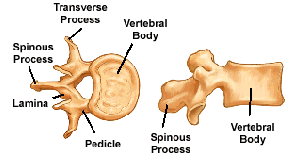SKIN
Skin is the largest sensory organ in our body. It is described as:
There are 3 layers of skin:
- Epidermis– a thin, cellular membrane layer.
- Corium or Dermis– dense, fibrous, connective tissue proper.
- Subcutaneous tissue– thick, fat-connecting tissue.
EPIDERMIS
The epidermis is the outermost, total cellular layer of the skin. It is composed of squamous epithelium. Epithelium is the covering of both the internal and external surfaces of the body. Squamous epithelium cells are flat and scale-like. In the outer layer of the skin, the cells are arranged in several layers or strata and therefore called stratified squamous epithelium.
The epidermis lacks the blood vessels, lymphatic vessels and connective tissue and is therefore dependent on the deeper corium layer and its rich network of capillaries for nourishment. In fact, nutrients and oxygen seep out of the capillaries in the corium, pass through tissue fluid and supply nutrients to the deeper layers of the epidermis.

CORIUM(DERMIS)
The corium layer, directly below the epidermis, is also called the dermis. It is composed of blood and lymph vessels, nerve fibers as well as the accessory organs of the skin, which are the hair follicles, sweat glands and sebaceous glands. To support the elaborate system of nerves, vessels and glands, the corium contains connective tissue cells and fibers that account for the extensibility and elasticity of the skin.
The corium is composed of interwoven elastic and collagen fibers. Collagen is a fibrous protein material found in bones, cartilage, tendon, ligament, as well as in the skin. It is tough and resistant but also flexible. In the infant, collagen is loose and delicate and becomes harder as the body ages. During pregnancy, overstretching of the skin may break the elastic collagen fibers and stretch the collagen resulting in linear markings on the skin, which are commonly known as the stretch marks. Collagen fibers support and protect the blood and nerve networks that pass through the corium. Collagen diseases affect connective tissues of the body.

SUBCUTANEOUS LAYER
The subcutaneous layer is another connective tissue layer that specializes in the formation of fat. Lipocytes or fat cells are predominant in the subcutaneous layer and they manufacture and store large quantities of fat in the skin. This layer is quite protective giving as it protects the deeper tissues of the body and it acts as a heat insulator.

Q.1. Which amongst the following is the largest sensory organ?
- Eyes
- Ear
- Nose
- Skin
Ans. d
Q.2. Sweat glands are present in:
- Subcutaneous layer
- Corium
- Epidermis
- both b and c
Ans. b
Q.3. Sebaceous glands are present in:
- Dermis
- Epidermis
- both a and b
- Subcutaneous layer
Ans. a
Q.4. Lipocytes are present in:
- Dermis
- Epidermis
- Corium
- Subcutaneous layer
Ans. d
Q.5. Which layer acts as insulating layer:
- Dermis
- Epidermis
- Corium
- Subcutaneous layer
Ans. d
Q.6. Epidermis is composed of:
- Stratified ciliated epithelium
- Stratified squamous epithelium
- Cuboidal epithelium
- Stratified cuboidal epithelium
Ans. b
Q.7. Blood vessels are present in:
- Dermis
- Epidermis
- Corium
- Subcutaneous layer
Ans. c
 IT2EDU Empowering Education Through Technology
IT2EDU Empowering Education Through Technology

